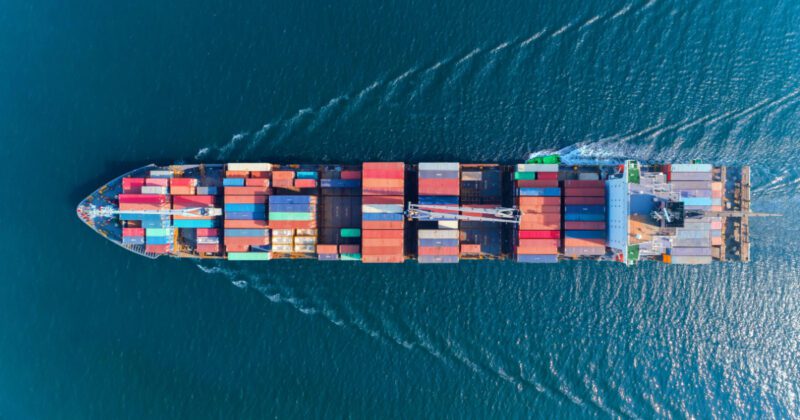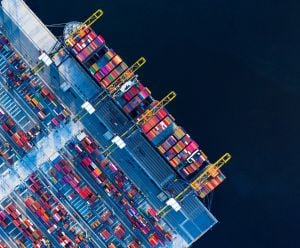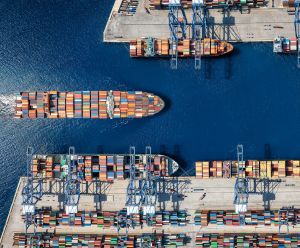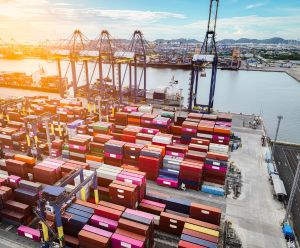
Improving schedule reliability offers a positive end to the year

With the year coming to a close, it is clear that change is the only constant. The continued shift in spot freight rates has left container lines wondering if this will carry on into the year ahead.
On the upside, the breather afforded by a lowered demand has led to a much needed improvement in capacity. The biggest positive out of this is most apparent in an improving global container line schedule reliability.
Ocean schedule reliability edges up
Poor schedule reliability has dogged container shipping services for the last two years, but there are signs of improvement in December. Lower demand for space, a trend which is resulting in ships sailing on less than a full load, has enabled carriers to reposition vessels and equipment, helping them smooth out network inefficiencies.
The December DHL Ocean Freight Market Update notes that global schedule reliability improved by 6.6 percentage points month-on-month in October to reach 52 percent. This was the largest increase in 2022 so far and brings reliability very close to 2020 levels.
Asia-Oceania was the trade with the lowest reliability (26.1 percent) while South America-Med registered the best performance (71.4 percent). Asia-North America services attained reliability levels of 35.7 percent and 26.9 percent to the US West Coast and East Coast, respectively.
Performance on Asia-North Europe trade improved to 44.3 percent, while trans-Atlantic reliability reached 35.7 percent on the westbound leg and 45.9 percent on the eastbound leg, notes the Update.
“In a perfect world, an improving schedule reliability should not be due to softening demand and surplus capacity,” said Kelvin Leung, CEO, DHL Global Forwarding Asia Pacific. “Nonetheless, the improvements are, hopefully, a sign of a recovering supply chain.”
Service cuts versus reliability
While a recovering schedule reliability is cause for celebration, there is a fine balance to maintain while carriers deal with the continued downward shift in spot freight rates. The softening rates have left container lines cautious, and in turn, might lead to increased blank sailings in an effort to maintain the status quo for rates.
Carriers are indeed blanking more sailings. In early December, 2M partners MSC and Maersk confirmed major Asia-North Europe service cuts ahead of Christmas due to slowing demand. On the Asia-Europe route, total capacity has contracted 7.2 percent since August . Some smaller carriers, primarily new entrants when rates were soaring, are cutting sailings, with a few exiting the market. Research firm Project44, meanwhile, reported capacity on services into the U.S. from China was cut by 21 percent between August and November.
Between the ongoing blank sailings and hopeful trajectory of the schedule reliability, the focus is to maintain a close watch on how carriers will react to the market in the months to come. “We have to keep our customers abreast of the situation, and be quick to advise how they can minimize the impact from these unforeseen blank sailings,” said Dominique von Orelli, Global Head, Ocean Freight, DHL Global Forwarding.
Maintaining rates level
Carrier blanks are, of course, aimed at stemming the spot rate declines suffered so far in 2022. In early December, the Shanghai Containerized Freight Index (SCFI) was edging ever closer to the 1,000 points mark last recorded in January 2020, down from 5,110 points in January 2022.
“At the beginning of the year most people in the liner shipping industry expected a slow normalization of the market,” noted online shipping database Alphaliner. “It took the SCFI until the second half of July to drop below the 4,000-point mark. The pace of descent has increased since. It took only another six weeks to fall below 3,000 points in early September and another four weeks to drop below the 2,000 mark.”
Despite the drops in spot markets, contract markets are still firm on most trades and liner returns remain in record territory. This helped major shipping lines (that report financial figures) make a “staggering” USD124bn in operating profit in 2021 and nearly USD122bn in the first three quarters of 2022, Alphaliner reported.
However, those profits will inevitably be eroded in the coming quarters as shippers renegotiate deals with lines, bringing contract and spot rates into closer alignment once more.
China’s effect on economic recovery
As the market goes into re-alignment, all eyes will be on the potential impact on the economy.
Hopes for a global trading and economic rebound is now centered on China. In early December, there were signs of a potential softening of the country’s zero Covid-19 policy. A renewed vaccination effort also added to the hopes of China reducing its strict restrictions.
“Over the past couple of days, a number of large cities – including Beijing, Shanghai, Guangzhou and Shenzhen – scrapped negative PCR test result requirements for public transport,” noted financial analyst firm Nomura in early December.
“Overall, we believe China is discouraging full-city hard lockdowns and taking steps to loosen the overly restrictive Covid curbs, especially the massive regular PCR tests. However, many other cities have yet to catch up, and some cities have even recently introduced new PCR test requirements, suggesting the central government has not given clear and direct instruction yet and local governments are still confused.”
Despite the uncertainty of China’s pandemic measures, the potential to reduce supply chain friction at factories and ports once it opens up would provide some much-needed economic stimulus with increased export levels from China, as much of the world threatens to turn recessionary.
MORE FROM THIS COLLECTION














 English
English